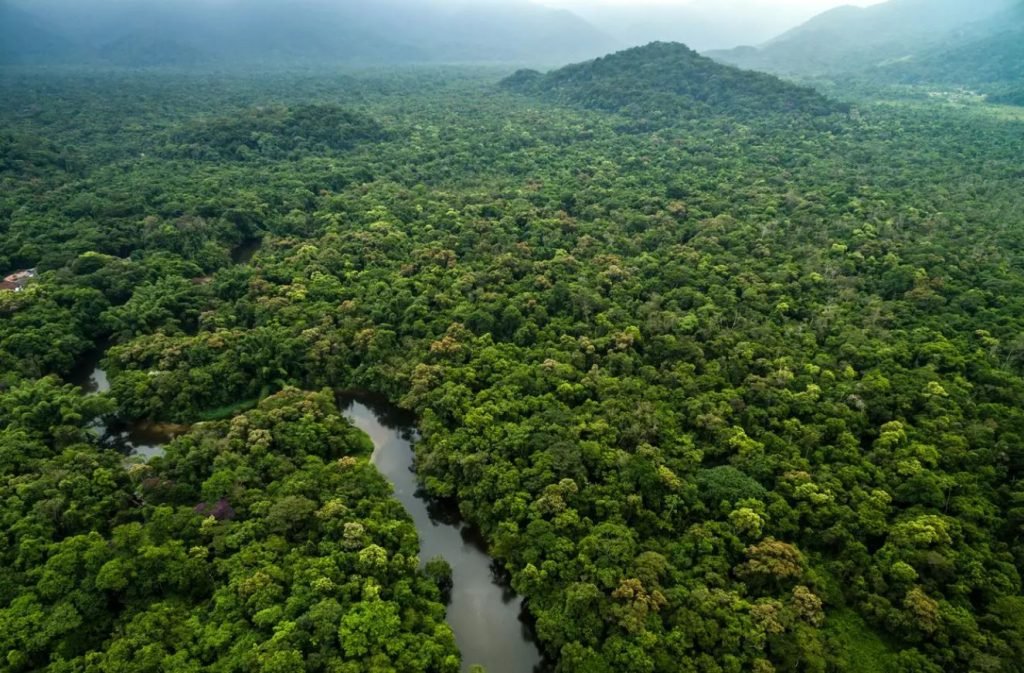Travel guide to the Amazon rainforest
The Amazon can have a mysterious character for those who visit this exotic land for the first time. This guide was prepared to inform you about the best areas to visit so that you don’t waste time on your visit, there are many destinations and activities to do in this area and we will help you to get the most out of your experience. You can also find out which are the best areas of the Amazon rainforest to observe certain animals and plants. For example, the clay licks are fantastic places to see macaws and other parrots. These are only found at certain points throughout Tambopata. The various lodges and jungle cruises also offer different activities included in your reservation.
There are some wildlife reserves within this lush area to conserve endangered species, for example, Manu National Park in southern Peru, home to 10% of all bird species in the world. It is common for national parks and reserves in the Amazon rainforest to have more species of birds and other animals than entire countries, in short, they are focused on conserving these species and their ecosystems.
For nature lovers, adventurers or simply people looking for a different kind of vacation, the Amazon is a perfect place to visit. The Amazon is also an ideal complement to other attractions within South America, such as the Galapagos Islands or Machu Picchu.
Amazon Rainforest: A World of Unique Species and Landscapes
The Amazon rainforest covers 40% of the South American continent. This immense rainforest contains some of the most pristine, least human-impacted tropical wilderness in the world. The rainforests of the Congo in Africa and the island of New Guinea, which follows in size, all fit perfectly within the immense expanse of the Amazon. In the Amazon rainforest you can find an incredible diversity of animals and plants as well as magnificent landscapes and oxbow lakes full of unique experiences in one of the most biodiverse destinations on Earth.
Tropical rainforests contain impressive animals and plants, unique in the world thanks to this prolific ecosystem. In total, the world’s rainforests cover only 7% of the Earth’s surface, but they contain 50% of all terrestrial species and the Amazon is the largest container of wildlife worldwide.
Countries that are home to the Amazon rainforest
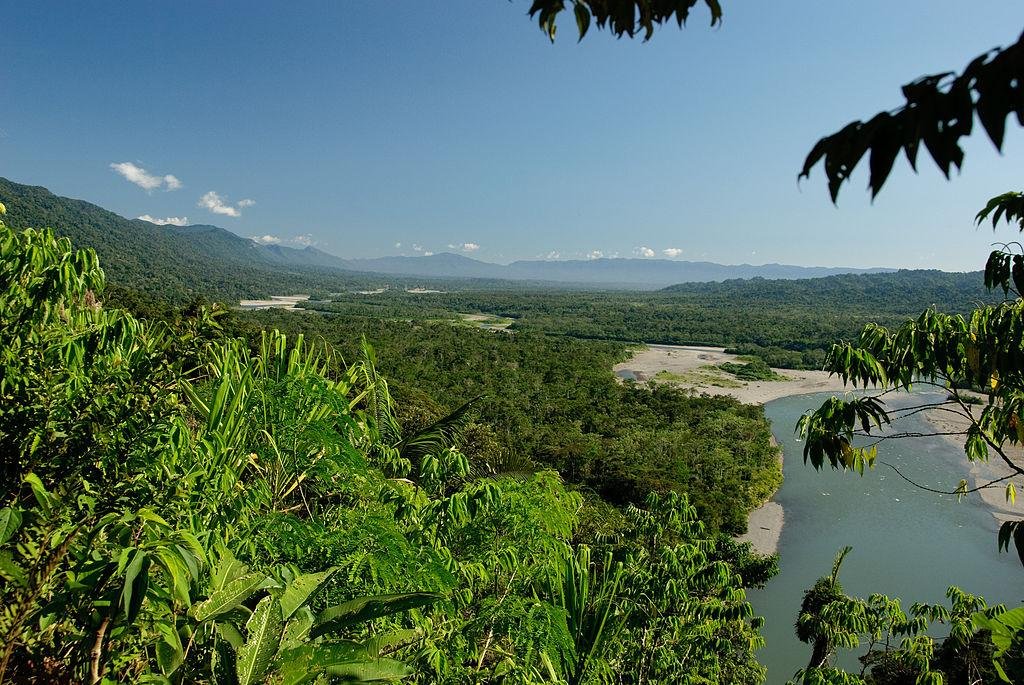
The Amazon rainforest passes through nine countries and covers 40% of South America. Most of the rainforest is in Brazil and Peru. However, it also runs through Ecuador, Venezuela, Bolivia and Colombia. There is also a section that runs through French Guiana, Guyana and Suriname.
The most biodiverse rainforest zone is always found on the western side. This is the rainforest of Ecuador, Peru and western Brazil.
The protected areas of Peru and Ecuador break records for species diversity. It is believed that the reason is the proximity to the Andes mountain range, because of this the ecosystem becomes much more prolific giving room for new species of flora and fauna, so many that more are still being discovered. Another theory is that they were the refuges that remained forested during the last glaciation.
You can find fantastic tours of the Amazon in Peru and the Ecuadorian jungle. The tributaries that originate in the Andes descend to form the Amazon River itself. These tributaries provide nutrients and water to feed this incredible rainforest.
Entrance cities to the Amazon
The gateways to the Amazon are towns and cities within the rainforest. The main ones are Iquitos, Puerto Maldonado and Manaus. These cities are located inside the rainforest, where you will have to arrive to start your journey through this majestic forest. They offer the most options for excursions, cruises and high quality lodges.
The main gateways to the Amazon rainforest in Peru are Puerto Maldonado and Iquitos. Puerto Maldonado is in the south of the Amazon. Iquitos to the northern jungle surrounding the Amazon River.
Iquitos is a good area to visit if you are interested in cruising. There are also fantastic experiences in the deep Amazon. Puerto Maldonado has one of the most developed and well-structured tourism industries in the entire Amazon. There are several jungle lodges to discover.
Manaus, in Brazil, is the largest city in the Amazon rainforest. It is another option for visitors interested in an Amazon cruise. You can also visit from the south of Brazil the city of Alta Floresta or Tefe to get to know the central jungle, rich in wildlife. Within the Ecuadorian Amazon rainforest, the main gateway is Puerto Francisco de Orellana, also known as “El Coca”. El Coca is another port on the Amazon River. And this is where you can enjoy Amazonian cruises and lodges. From here, you can explore the protected areas of the famous Yasuní National Park and the Cuyabeno Reserve.
Growth of Cities during the Rubber Boom
Gateway cities grew in size during the rubber boom. This was a period when the rise of the bicycle and the automobile led to a massive demand for rubber. Rubber was obtained naturally from the Hevea brasiliensis trees of the Amazon. The rule of thumb for gateways to the rainforest is that the larger the town or city, the further you have to travel to find more virgin rainforest, and with less human impact, i.e. more authentic wildlife.
Amazon rainforest attractions
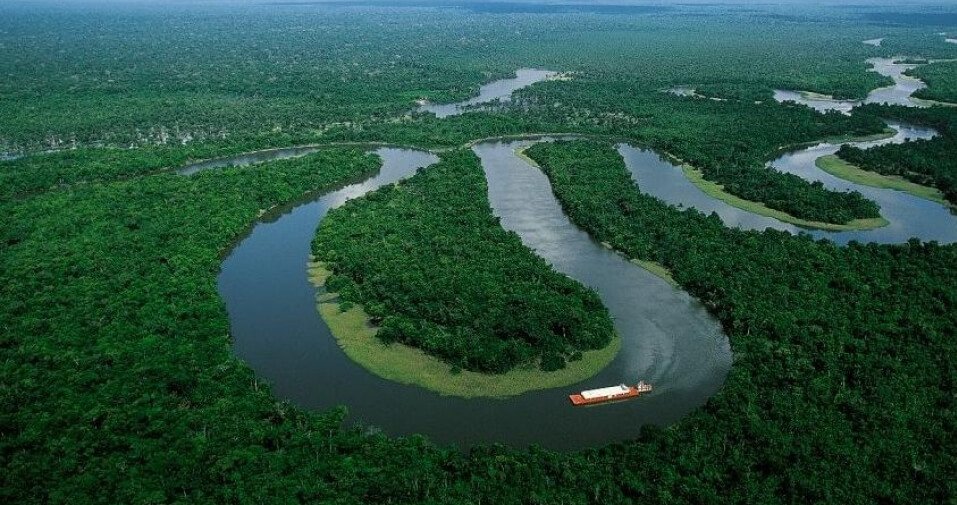
In the Amazon rainforest there are a variety of fascinating attractions. You will find oxbow lakes, collpas, observation towers and tall emergent trees.
Don’t limit yourself to the lowland rainforest, you can also explore the mysterious cloud forests of the Andean foothills, another fantastic destination with unique landscapes and other types of ecosystems worth visiting. Mostly different in altitude and climate, these forests are home to a whole new set of animals and plants.
1. The Amazon River
The Amazon River itself is one of the main attractions of the region. The river runs between El Coca, in Ecuador, and Belem, in Brazil, where it flows into the Atlantic Ocean.
The ports that can be visited along the Amazon River are El Coca, Iquitos, Leticia, Tefe, Manaus and Belem. The best way to explore the Amazon River is on a cruise through the Amazon rainforest from these port cities.
Some of the most highly recommended favorite cruises are the Amazon River excursions from Iquitos in northern Peru. These cruises will take you deep into the incredible flooded jungle of the Pacaya Samiria National Reserve. You will not be limited to the boat. You will enjoy guided skiff expeditions and jungle trekking for incredible wildlife experiences.
2. Cochas
The oxbow lakes are areas where tributaries of the Amazon River used to flow and have changed direction. This sometimes leaves behind u-shaped bodies of water, known as cochas. These lakes are very attractive to a great variety of animals and plants attracted by the water and its characteristic flora that forms part of their diet.
In the tours through the oxbow lakes you can find a great variety of animals. Among them are often the iconic animals of the Amazon. Giant river otters, black caimans, aquatic birds, giant Arapaima fish and animals that visit the lakes can be seen. Among them are many different monkeys, which feed on the fruits of the trees surrounding the lake.
One of the most common animals in the oxbow lakes are the strange hoatzin. They are chicken-sized birds that digest food by fermentation in a similar way to cows. Interestingly, young hoatzins are born with a claw. This is used to cut the eggshell that conceives them, but also to climb through the thick vegetation on the shores of lakes.
The lakes are also often surrounded by palm trees. And these are the ideal nesting habitat for scarlet macaws and other parrots that often inhabit these areas. This means that different macaw parrots can often be seen on short walks around the lakes with their iconic squawks.
Some of the best lodges in Peru to visit the oxbow lakes are Posada Amazonas Lodge, Refugio Amazonas Lodge and Tahuayo Lodge.
3. Collpas
Clay licks are areas on the exposed banks of rivers where different animals come to feed on the exposed clay itself. More than 50 different animals around the world are known to use clay licks. And the clay not only contains much needed salt, but also neutralizes toxins found in unripe fruits and seeds.
In South America and the Amazon rainforest, one of the most emblematic animals that visit the clay licks are the fantastic macaws.
Hundreds of macaws gather at a time on the clay and offer visitors a fantastic display of sound and color. All kinds of birds can be seen on the various clay walls along the Amazon. In some of them you can see red macaws and in others, blue and golden macaws, for example.
Clay licks in Puerto Maldonado
The rainforest of Puerto Maldonado, in southern Peru, is fortunate to be home to the largest number of clay licks in the entire Amazon. This has created one of the most developed tourism industries in the Amazon.
Macaw clay licks can be found throughout the jungle of Puerto Maldonado and in the various protected areas. For example, one of the best macaw clay licks is Chuncho, in the southern Peruvian Amazon. It is accessible from both the Tambopata Research Center and the Refugio Amazonas Lodge.
Smaller mammal clay licks are also located nearby, which can also be seen from Refugio Amazonas Lodge. Small parrot clay licks can be seen from Posada Amazonas Lodge.
On cruises and lodge excursions in the Ecuadorian Amazon, you can also visit the small parakeet clay lick in Yasuní National Park. You can visit the clay lick on excursions from La Selva Lodge.
On the Brazilian side, a mammal clay lick with a strategic hide can be seen at Cristalino Lodge.
4. The cloud forest
Cloud forests are defined as tropical forests at higher altitudes where the proximity to the clouds is noticeable. Andean forests are home to one of the highest levels of species on Earth. And they are abundant in birds, including the greatest diversity of hummingbirds in the world.
On the cloud forest tours, you will encounter many strange and wonderful animals and plants. In addition to birds, see one of the greatest diversity of orchids and epiphytes. Observe the different hummingbirds and visit the dancing land of the cock-of-the-rock. You can also see different mammals, such as woolly monkeys, capuchins and even spectacled bears.
To visit the cloud forest, there are fantastic tours within Ecuador and Peru. In Peru, you can visit the cloud forest of the incredible Manu National Park, accessible from the city of Cuzco.
Protected areas of the Amazon rainforest
In the Amazon rainforest, protected areas that are responsible for safeguarding ecosystems and iconic species have done a great job in recent years in helping to reduce deforestation in the rainforest. They have helped protect many animals and plants from imminent extinction at the hand of environmental destruction. In and around these areas there is a greater chance of spotting emblematic and famous species. They are also home to greater biodiversity.
Some of the most accessible and diverse protected areas in the Amazon rainforest are:
1. Yasuní National Park, Ecuador
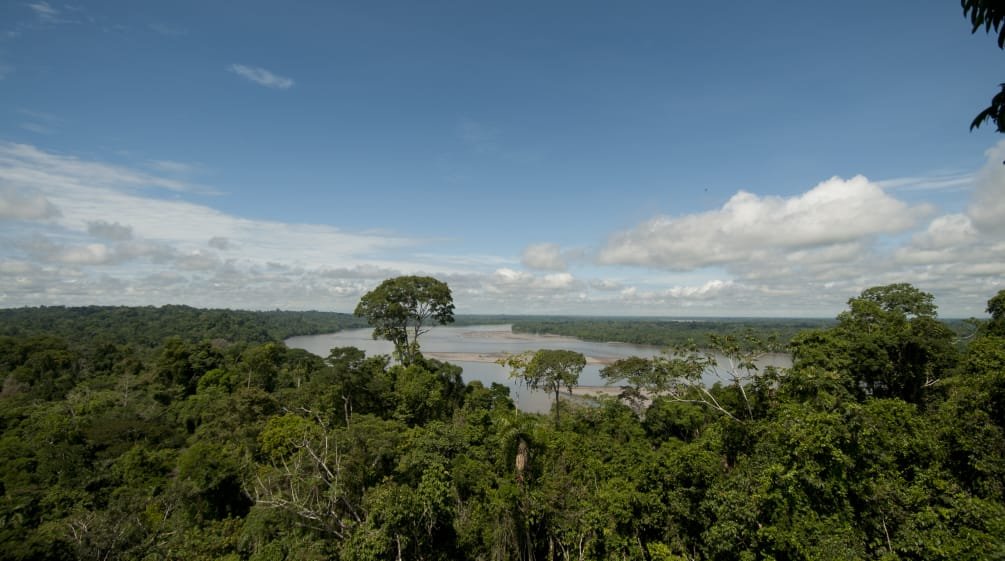
Yasuní National Park is one of the most famous protected areas in the Amazon rainforest. Protects an astounding diversity of species, has broken world records for species richness. This park is located in western Ecuador. It is accessible from the city of El Coca (Puerto Francisco de Orellana), gateway to the rainforest.
Its extension covers one million hectares of lowland rainforest. Because of this it has the ability to protect many different animals and plants, including Amazonian icons. Because of its ecological importance, the park is recognized by UNESCO as a Yasuní Biosphere Reserve.
Around Yasuní National Park there are fantastic lodges in the rainforest. Amazon river cruises also organize expeditions into the protected area. Two recommended lodges in the surrounding jungle are La Selva Lodge and Sacha Lodge.
2. Pacaya Samiria National Reserve, Peru
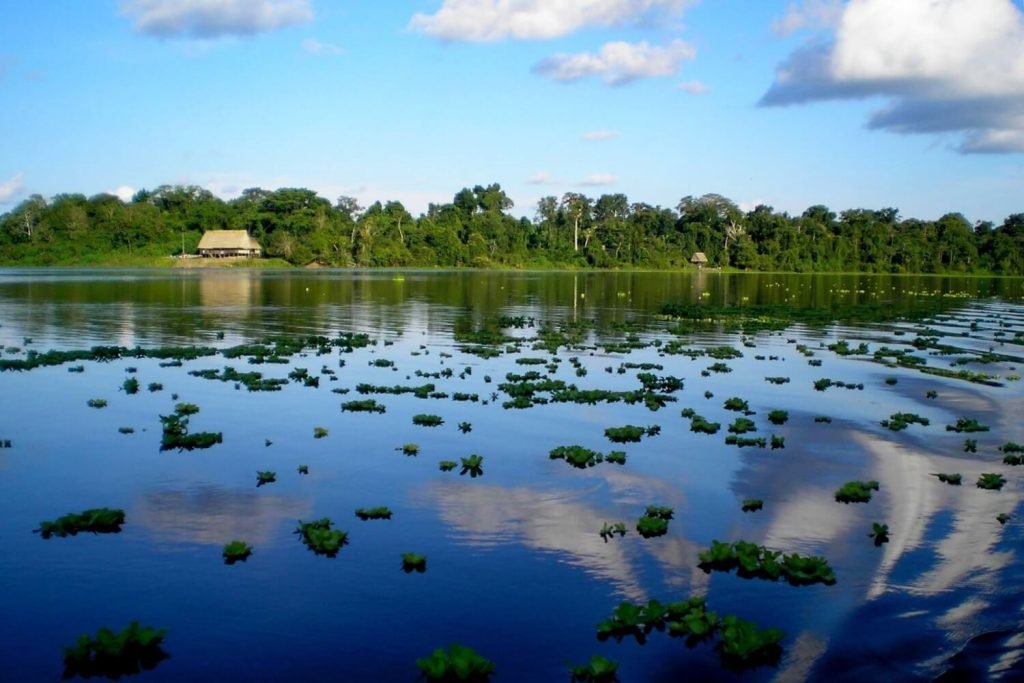
The Pacaya Samiria National Reserve, a fantastic section of flooded Amazon rainforest, covers 2 million hectares of tropical forest. All the emblematic animals and plants can be found in the reserve. The fauna includes pink river dolphins, different monkeys, sloths, toucans, parrots, anacondas and black caimans. There are also impressive plants, such as giant water lilies and towering rainforest trees.
Full of beautiful landscapes, the Pacaya is known as the forest of mirrors. The almost perfect reflections in the water create a breathtaking landscape. The reflections are caused by the almost black water full of nutrients from the Pacaya Samiria. This also provides food for the incredible diversity of animals and plants.
3. Pacaya Samiria, Delfin II Luxury Cruise, Iquitos, Peru
As it is such an extensive reserve of flooded jungle, the best way to get to know Pacaya Samiria is by cruise ship. From Iquitos you can take excellent excursions that cross the Amazon River. The cruises go up the Amazon and its tributaries. They also offer guided tours through the jungle.
Explore the rainforest and waterways on jungle walks and guided skiff expeditions. You will encounter a wide variety of monkeys, colorful birds and an extensive diversity of other animals and plants. Recommended cruises include the fantastic Delfin boats, such as the Delfin I, Delfin II and Delfin III.
4. Tamshiyacu Tahuayo Reserve, Peru
Tamshiyacu Tahuayo Reserve is an extension of protected land in the Amazon rainforest in northern Peru, which is connected to the aforementioned Pacaya Samiria National Reserve. However, Tamshiyacu Tahuayo contains some more accessible forests at higher altitudes. This means more opportunities for jungle trekking. This is an especially good place to find the iconic poison dart frogs that inhabit its lands.
The Tamshiyacu Tahuayo Reserve contains an impressive diversity of animals and plants. Home to more than 600 species of birds, the reserve attracts birdwatchers from all over the world. At this destination you will be able to observe different toucans, macaws, parrots, tanagers, cotingas and many more. In addition to birds and poison dart frogs, you will see numerous monkeys and other wildlife. You will also find sloths, arboreal anteaters, orchids, epiphytes and tall emergent trees.
To explore the Tahuayo Reserve, you can stay at the Tahuayo Lodge. This is the only lodge within the reserve and you will receive a private guide and a personalized itinerary included in the price of your stay.
In addition to the main Tahuayo Lodge, you can also visit the Tahuayo Amazon Research Center. This has a 1,000 acre primate research grid to find many different monkeys and more.
5. Tambopata National Reserve, Peru
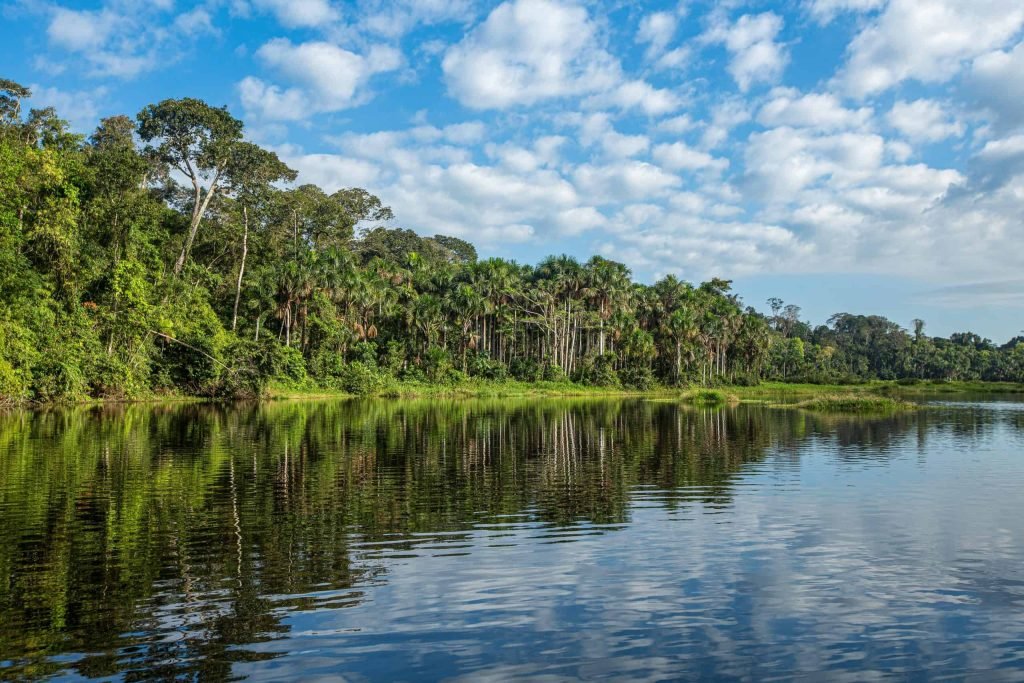
The Reserve is located in southern Peru. It can be reached after only 30 minutes drive from the city of Puerto Maldonado, gateway to the rainforest from southern Peru.
This section of Peru contains the largest number of clay licks in the Amazon. They are fantastic places to see colorful macaw parrots gathered in the clay. You can also find beautiful oxbow lakes, where it is common to see giant river otters.
The Tambopata National Reserve has an area of approximately 274,690 hectares of lowland Amazon rainforest. It protects the southern stretch of the Tambopata River as it descends from Lake Titicaca through the Andes.
The reserve is home to fantastic animals and plants. Among them are the tall emergent chestnut, mahogany and cedar trees.
From this point you will be able to observe several toucans, macaws and other parrots flying over the forest. The best way to observe them is in the colpas and observation towers, which you can find in some Tambopata jungle lodges.
Tambopata jungle lodges offer fantastic trails, lakes and clay licks. In addition, you will find a great variety of rainforest animals. Enjoy seeing herds of peccaries, several different monkeys and giant river otters. You may even have the chance to spot jaguars from the lodges deeper in the jungle. Our favorite lodge in Tambopata is the Tambopata Research Center. This lodge even offers a 20% chance of spotting wild jaguars and is the most remote lodge in the world.
Another favorite place to see giant river otters is the Posada Amazonas Lodge, owned by local communities. It is located in a jungle connected to the reserve.
6. Manu National Park, Peru
Manu National Park occupies an impressive 1.5 million hectares. The area protects the entire Manu River. Manu continues to break records for wildlife richness. This is due not only to its great extension, but also to the fact that it includes lowland rainforest and forest in the Andes, two ecosystems of great importance for the development of new species.
Although visitors are not allowed to enter the national park itself, they can visit the connected rainforest. This is the rainforest surrounding the park, known as the Reserved Zone. You can enjoy a large macaw clay lick where hundreds of colorful macaws gather. You can also see a beautiful lake where giant river otters and different monkeys congregate.
7. Anavilhanas National Park, Brazil
The Anavilhanas Reserve is located in the central Amazon rainforest of Brazil. It is a section of flooded Amazon rainforest. This magnificent region is part of the Ecological Corridor of the Central Amazon, a UNESCO World Heritage Site. It is the largest section of protected Amazon rainforest. It was formed by joining different reserves and national parks.
The Anavilhanas National Park section covers 350,470 hectares of mostly flooded rainforest. And the main iconic feature of the area are the 400 different islands that compose it.
Thanks to the large amount of water, the reserve is home to a large number of electric fish and other aquatic animals. The surrounding jungle is also home to emblematic and rarely seen animals, such as the jaguar, river otter and giant anteater.
To visit the Anavilhanas National Park and the surrounding rainforest, you can enjoy the Tucano Expedition Cruise. Offering a steamboat-style tour, you will enjoy your journey deeper into the rainforest than other vessels. You will then enjoy expertly guided jungle expeditions.
8. Cristalino Reserve, Brazil
The Cristalino Reserve is a smaller protected area than the others on this list, but no less fascinating in terms of fauna, flora, and overall diversity. You will find several different monkeys, fascinating reptiles and amphibians, and hundreds of birds. Many of the species here are not found anywhere else.
The reserve is located at the confluence of the Amazon rainforest and the Pantanal wetlands. As a result, fascinating areas have been created to observe a variety of species. From the reserve’s Cristalino lodge, you can explore the jungle to see some of the emblematic animals and plants of the Amazon.
The Cristalino Reserve is relatively small compared to those mentioned above, at 11,400 hectares. However, it is connected to the neighboring 184,900 hectare Cristalino State Park, as well as other protected areas. There are many reserves, national parks and conservation forests connected to each other. In total, they cover more than 2 million hectares of Amazon rainforest.
Several different monkeys, peccaries and giant river otters can be seen. The big cats of puma and jaguar are also found within the reserve. In addition to the fantastic mammals, 586 species of birds can be seen. This represents 50% of all birds in Brazil. Therefore, the reserve is a highly recommended destination for birdwatchers.
Excursions through the Amazon rainforest
To enjoy the Amazon rainforest, you can stay in a variety of fantastic lodges. They offer their own guided excursions through the Amazon to observe the wildlife. You can also opt for a river cruise through the various rivers that make up the region. Luxury cruises offer a little more comfort as you head deeper into the jungle. You will enjoy guided skiff expeditions in search of the jungle’s most hidden wildlife.
We review some of the best recommendations for lodging in the Amazon.
Lodges in the Amazon rainforest
This is our selection of recommended lodges in the Amazon rainforest. We will first mention the most remote jungle lodges to enjoy the best wildlife experiences. All include lodging, guided tours, meals and transfers from the nearest jungle town or city.
1. Tambopata Research Center, Peru
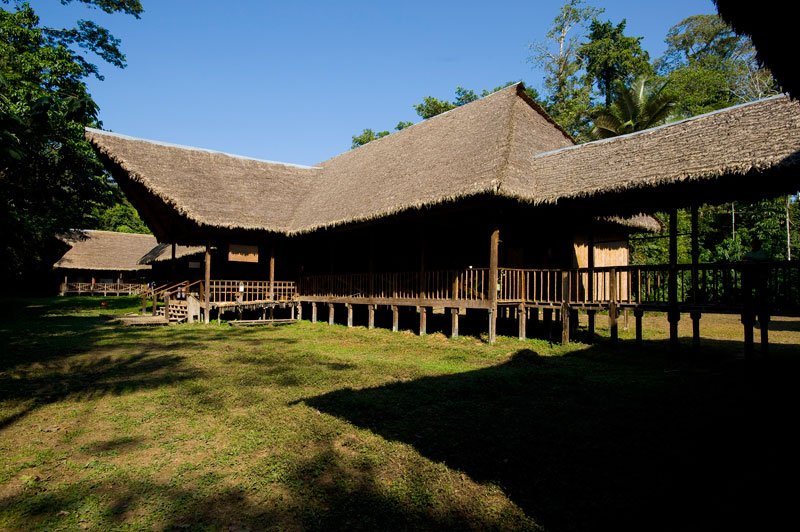
The Tambopata Research Center is located in the middle of the Tambopata Reserve, pleasantly rich and prolific in wildlife. It is located in southern Peru and is accessible from the city of Puerto Maldonado.
Because this is a lodge in the deep jungle of the Amazon, the surrounding jungle is largely surrounded by wildlife in its most natural state. This means that there is a greater chance of spotting abundant, rare and iconic animals. For example, 20% of Tambopata Research Center guests are lucky enough to see wild jaguars.
Enjoy guided expeditions through the reserve to find numerous animals and plants. You will find a great variety of monkeys. Among them, capuchins, squirrel monkeys, marmosets, howler monkeys and even spider monkeys. These are the largest species in the Amazon and are rarely seen at other lodges, thanks to its location so deep in the jungle.
The Tambopata Research Center is located near a large macaw clay lick. It is a great area to observe hundreds of colorful macaw parrots. You will also explore different rainforest habitats that host their own communities of animals and plants.
2. Tahuayo Lodge, Peru
Tahuayo Lodge is located deep in the rainforest. It is about 150 km from the city of Iquitos, in the northern Peruvian Amazon. The lodge is located in the fantastic Tamshiyacu Tahuayo Reserve. And it is a great section of the Amazon to find a great variety of different monkeys and other wild animals.
From the Tahuayo Lodge, go on a private and personalized guided excursion through the Amazon. You will encounter many different monkeys. Among them, howler monkeys, squirrel monkeys, capuchins, titi monkeys and pygmy marmosets. You will also find a great variety of the 600 different birds that inhabit the reserve. This makes it an ideal place for birdwatchers and nature lovers.
From the lodge, you can also enjoy canoeing and the largest zip line in the Amazon as outdoor activities in the area. You can even choose to camp for a night or two in the jungle.
As this is a privately guided tour with a tailor-made itinerary, the trip is personalized according to your preferences and needs. You can choose the pace and activities that best suit your personality and interests. Enjoy wildlife viewing, relaxation, adventure or photography.
Exploration of the Amazon Research Center
On tours of 6 days or more at Tahuayo Lodge, you will also visit the Amazon Research Center of the Tahuayo River (ARC). The ARC is located in an even more pristine rainforest. Surrounding the ARC is a 1,000 acre primate research grid. This grid is perfect for observing different animals that show more normal behavior. The animals have become more accustomed to the researchers and do not feel threatened when observed or interacted with.
3. Sacha Lodge, Ecuador
Sacha Lodge, in the Amazon rainforest of Ecuador, is an ideal place for nature lovers. The most iconic feature of this lodge is the large canopy walkway or observation tower. It stretches 275 meters across the jungle. It reaches 30 meters high and is a fantastic place for bird watching.
There are fascinating species. Over 587 different birds have been sighted from the lodge. To put this in perspective, this represents 37% of all birds in Ecuador.
In addition to the bird life, you can enjoy guided expeditions through the surrounding rainforest. You will see many different primates, reptiles, colorful butterflies and fascinating alligator crocodiles.
Sacha Lodge offers single, double and triple accommodations. The rooms have private bathrooms with hot water shower and cistern. These rooms have mosquito nets to keep you comfortable during your visit to the jungle.
Meals are served in the dining room as a buffet and there are three meals a day. At least one of the evenings will be a barbecue in the outdoor dining room. The bar offers a wide variety of drinks, so you can relax with a drink after your excursions.
4. La Selva Lodge, Ecuador – Luxury
La Selva Lodge is a fantastic luxury lodge in the rainforest. This is a great option if you are looking for a little more comfort in the Amazon rainforest.
Enjoy guided excursions in the rainforest connected to the Yasuní National Park. You will find a great diversity of animals and plants of the Amazon rainforest.
Enjoy the lodge’s high canopy tower, visit the Yasuni clay lick and canoe on the Garzacocha lagoon.
You can also explore the various jungle trails. These were designed to take you through the most fascinating attractions of the jungle. Enjoy the trails of tall strangler figs and emergent trees. See some of the oldest primary forests and the best areas to observe the surrounding wildlife. A favorite species is the small pygmy marmosets, who seem to enjoy watching you as much as you enjoy watching them.
As you explore the trails, you will look for the great variety of species that inhabit the rainforest. Your guide will help you find different monkeys, birds, reptiles and amphibians. You will also see and learn more about the beautiful plants that surround you.
La Selva Lodge is also a rainforest spa. And that means you can enjoy a selection of relaxation treatments and massages during your stay. It’s the perfect way to unwind after exploring the Amazon rainforest. The lodge offers very comfortable suites, a restaurant serving delicious cuisine and a bar where you can enjoy a cocktail. There are also excellent observation areas.
5. Refugio Amazonas Lodge, Puerto Maldonado, Peru
Refugio Amazonas Lodge is located in the buffer zone of the Tambopata National Reserve. At the lodge you can enjoy a high canopy tower to spot toucans and parrots over the rainforest. Explore the jungle through guided expeditions to find a great diversity of wildlife. You will see colorful birds, several different monkeys and other Amazonian animals. Recently, guests at Refugio Amazonas have been lucky enough to see the famous harpy eagles. The eagles nest in the surrounding jungle and are truly a once in a lifetime spectacle to watch.
You can also visit a small parrot clay lick and a small mammal clay lick. This means that you will be able to see fascinating fauna. In addition, you can visit the large Chuncho clay lick. It is a fantastic place to see hundreds of colorful macaws visiting the clay.
You can choose from a variety of activities. These include mountain biking through the jungle, night hikes, wildlife walks and visits to lakes. There are also scientific and community activities in which you can participate.
Refugio Amazonas Lodge also has a spa that offers relaxation and aromatherapy treatments. After your excursions, you can relax with a massage listening to the sounds of the Amazon, an experience that will immerse you in a unique connection with the Amazon rainforest.
Refugio Amazonas is a great choice for families. The lodge is unique among Amazon lodges in that it offers a trail for children to explore on their own terms. The trail is specifically designed to teach young children about the Amazon rainforest in an up-close and safe way.
6. La Villa Amazonas, Peru – Luxury
Villa Amazonas offers an exclusive stay in a very comfortable bungalow in the rainforest. It is located in the buffer zone of the Tambopata National Reserve.
You will be assigned a private guide to explore the surrounding rainforest. Visit the large Chuncho clay lick to see hundreds of macaws gathered in the clay. You will also visit some smaller clay licks to see different animals including mammals and birds.
Explore the rainforest to find colorful birds and several different monkeys. Among them, capuchins, squirrel monkeys, titi monkeys and howler monkeys.
The Villa Amazonas is equipped with comfortable facilities that will offer you a unique comfort. These include a hot water bath, Wifi internet and a television to watch nature documentaries. It also has jungle electricity, refrigerator and microwave. There is also a place for your laptop to catch up on work and view your photos.
From Villa Amazonas, you can also enjoy a selection of jungle activities. These include jungle mountain biking, nature walks, night hikes and visits to jungle farms.
From here you can climb a high tower to contemplate the Tambopata rainforest. You will be able to spot colorful toucans, parrots and even mixed species flocks. You can also choose from a number of options exclusive to this particular lodge.
7. Posada Amazonas Lodge, Puerto Maldonado, Peru
Posada Amazonas Lodge is a community-owned rainforest lodge. It is located in the jungle surrounding Puerto Maldonado in southern Peru. From the Posada Amazonas Lodge, you can enjoy a fantastic excursion through the Amazon rainforest. You will see a great diversity of Amazonian animals and plants.
Explore the nearby oxbow lake to find giant river otters. See a small parrot clay lick. And you can also climb a high canopy tower to spot parrots, toucans and mixed species flocks. You will also explore the rainforest to find different monkeys and colorful birds. From Posada Amazonas Lodge, you can choose from a variety of activities. These include wildlife hikes, jungle mountain biking, visiting a jungle farm and much more.
At the lodge you can choose between different suites and comfort levels. Posada Amazonas also offers a small spa where you can enjoy massages and relaxation treatments surrounded by tropical jungle.
This lodge also gives you the option to coexist in a closer way with the indigenous community that inhabits the surroundings of the area where it is located, which owns the ranch communally. You will have different activities where you will learn a little more about the culture and habits of this interesting population.
Amazon Cruises
Another way to get to know the Amazon rainforest is on a cruise through the Amazon River. Aboard the cruises, you will descend tributaries of the Amazon River and enter incredible protected areas. Led by expert guides, enjoy skiff expeditions and jungle walks. Your guide will help you find many animals and plants. You will also enjoy beautiful scenery in some of the most pristine areas of the rainforest.

